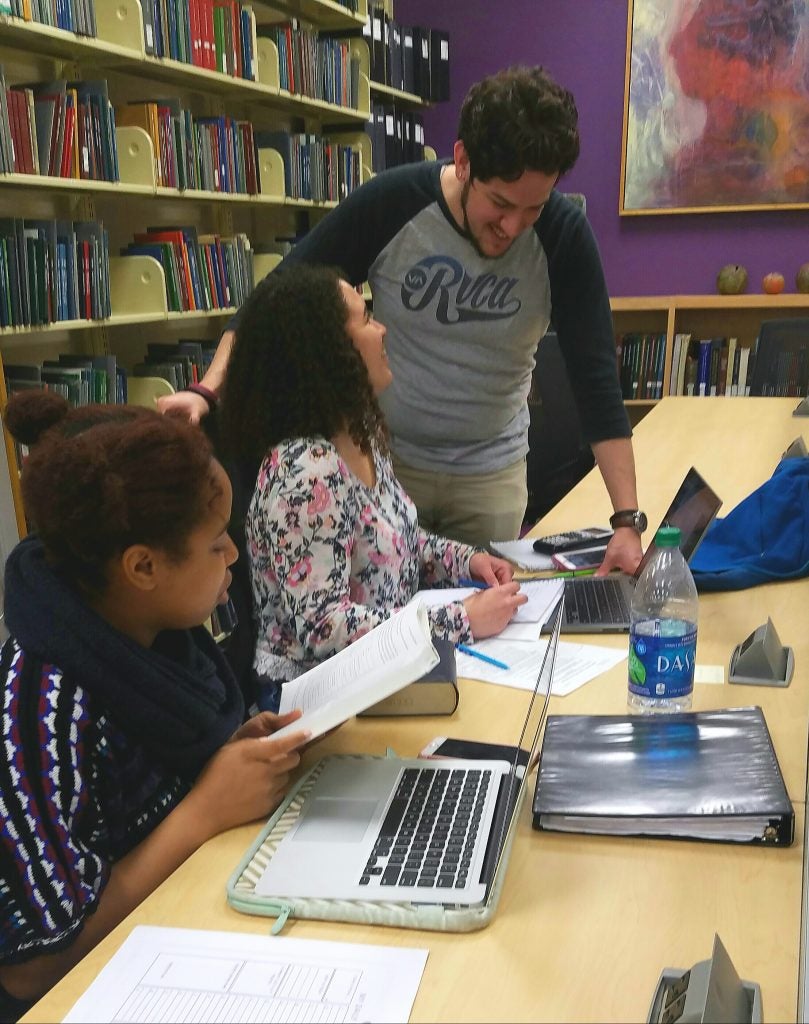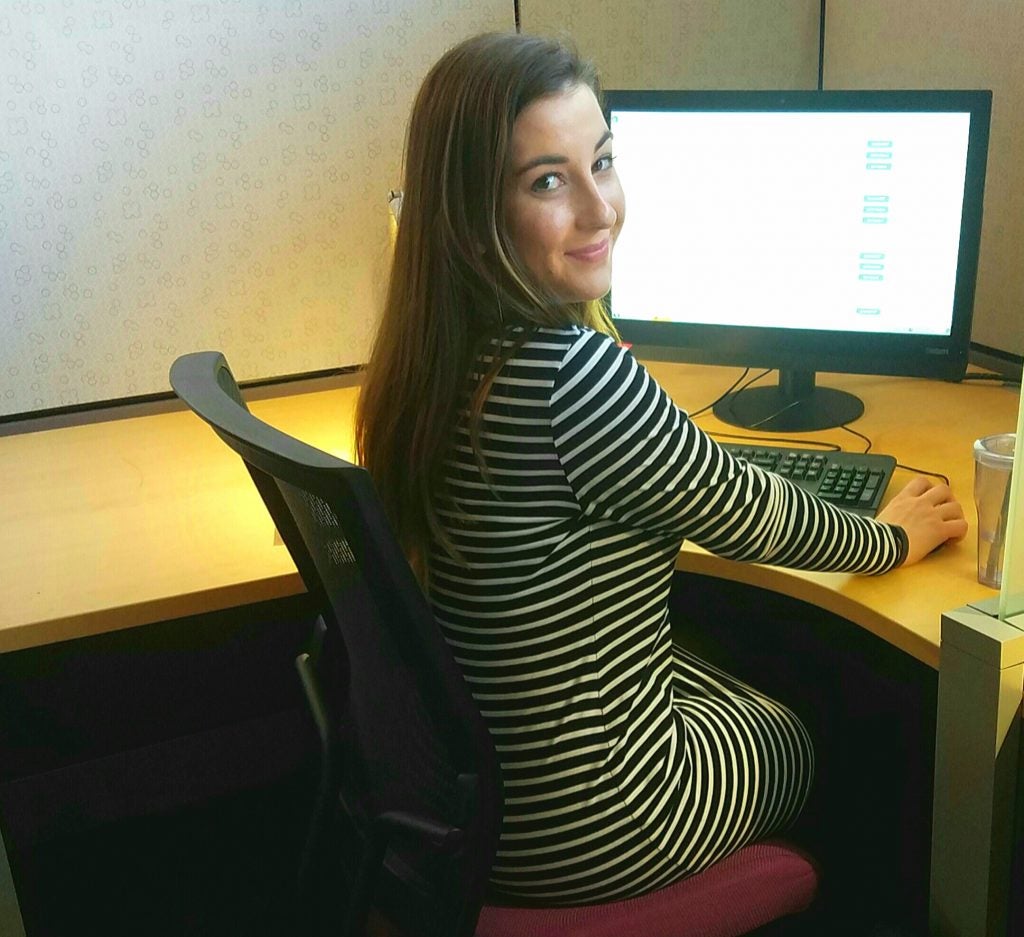ECU Music Library responds to patrons’ needs
East Carolina University’s Music Library, a department of Joyner Library located on the first floor of the A.J. Fletcher Music Center, offers newly renovated spaces and resources based on the changing needs of its patrons.
First established in 1974, the library contains the largest music collection east of Raleigh. It now serves the needs of music lovers, performers and educators from all parts of eastern North Carolina while continuing its primary focus on the needs of ECU students, faculty and staff, particularly the School of Music and the School of Theatre and Dance.

Freshmen TayAndra Allen, Paige Yanik and Jacob Abolos work together near the new electrical outlets for easy charging. (Photos by Kelly Rogers Dilda)
Music Library collections include music scores, books, journals, microforms and computer software dealing with every musical style and genre from classical to rock to reggae. The library provides both Mac and PC computers, a quiet study room, a group listening/viewing/study room, audio and video dubbing service, and music reference assistance. It also houses Joyner Library’s entire recording collection as well as the music-related portion of its video recording collection.
More than 100,000 items, many of which have come from in-kind donations, are offered to an average of 70,000 patrons who visit the library each year.
The need for renovating the space and its resources was first discovered after ECU anthropology professor Dr. Christine Avenarius and David Hursh, head music librarian, conducted an ethnographic study to determine how patrons were using the space. “Ethnographic studies are time-intensive, but the accuracy of the results is worth the extra effort,” said Hursh. “People often say they do one thing, but do another. Observing people’s actions is the best way to determine what is really happening,”
Study results determined that the design of the library space was exactly the opposite of what worked best for its users. Outcomes revealed ECU music students overwhelmingly preferred to study individually rather than collaboratively. Before the remodel, students spent long periods of study time in six cramped study carrels located near the busiest and loudest part of the library, the circulation desk. Students also spent shorter periods of time in the Technology Lab, the quietest part of the library.
The two spaces were switched, with the lab now serving as a quiet study room. This space now offers 12 study carrels custom-designed to meet the needs of music students who often use oversized materials or multiple print materials simultaneously. Computers at standing stations just inside the library’s doors allow patrons to quickly check email and print assignments between classes without bothering those who are doing long-term study.
Results also showed that patrons like to multi-task with electronic equipment. Because previous arrangements offered little access to electrical outlets all new furniture purchases included units with power.
The remodel also brought the addition of a new group listening/viewing/study room, a staple in most other music libraries that was previously missing from this one. The addition of this room has been a goal of Hursh’s ever since he came to ECU nearly 20 years ago. This room allows students to study for music history listening tests and other exam and class preparation together, sharing style characteristics that distinguish one piece from another while they listen. It also offers the complete range of audiovisual (AV) playback equipment, a large monitor for group viewing, two whiteboards (one with music staves), seating and portable work surfaces for eight.
Faculty needs were also considered since they sometimes need space for small seminar classes and tutoring activities. Available to anyone by reservation, this room may encourage more collaboration in the library.
“I am pleased to see these contrasting study spaces are already being heavily used by the students,” Hursh said. “A recent renovation follow-up survey we conducted in late January indicated the quiet study and AV rooms are the most-liked features of the remodeled facility.”
The remodeled facility was also fitted with a technology alcove complete with printing and scanning services, as well as the tools necessary for preparing musical score copies for performance purposes. The open wall spaces provided by the renovation and a new display case will be used to showcase student art, a form of outreach to student body members who might otherwise not know there is a music library on their campus.
A Jan. 20 open house celebration was held to reveal the revitalized space and recognize those who contributed to the project.
Janice S. Lewis, director of academic library services, noted that “the maxim ‘Listen, Observe, Think & Then Take Action’ successfully served as a guide to the Music Library renovation.” The renovation is the second major project undertaken by the Joyner Library Advancement Council.
Current council chair Shelby Strother recounted her experiences as a student in the School of Music, preparing for listening exams in a hallway with classmates. She marveled, “how far we have come in supporting School of Music students.”
The Music Library is located on the first floor of the Fletcher Music Center. For more information please visit http://www.ecu.edu/cs-lib/music.cfm or call 252-328-6250.
-by Kelly Rogers Dilda, Joyner Library
